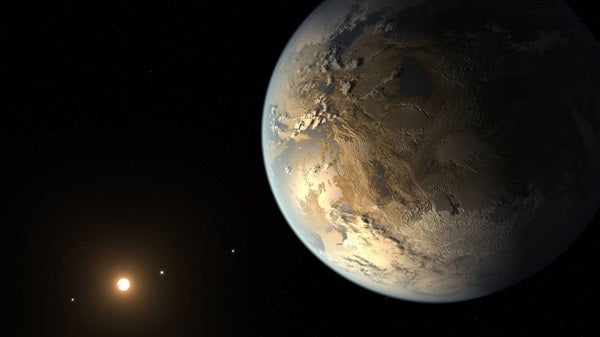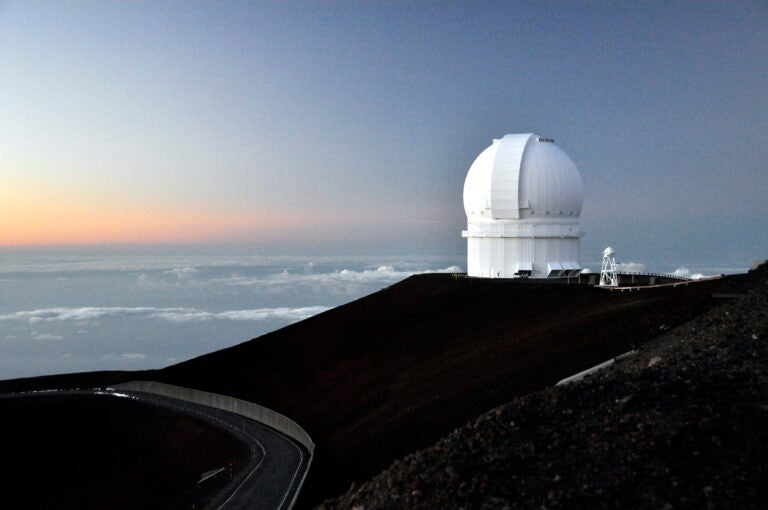An artist’s illustration shows Kepler-186f. Discovered in 2014, it was the first Earth-sized exoplanet confirmed to be orbiting in a star’s habitable zone. The bright light given off by host stars usually overshadows the faint light given off by exoplanets, but by drowning out starlight, DARKNESS hopes to image exoplanets that are 100 million times fainter than their host stars.
Astronomers have put significant time and effort toward identifying habitable exoplanets, and with new technology emerging, it looks like their hard work could pay off sooner rather than later. NASA’s Transiting Exoplanet Survey Satellite (TESS), a mission expected to identify thousands of exoplanet candidates, is scheduled for launch within the next few weeks, and the exoplanet-hunting James Webb Space Telescope is set to launch in 2020. If those advancements aren’t promising enough, a new technology could soon be added to the planetary pursuit: the world’s largest and most advanced camera.
Developed by an international team of researchers, the DARK-speckle Near-infrared Energy-resolved Superconducting Spectrophotometer (DARKNESS) is a 10,000-pixel integral field spectrograph that’s able to differentiate between light emitted by planets and light emitted by stars.
“Taking a picture of an exoplanet is extremely challenging because the star is much brighter than the planet, and the planet is very close to the star,” said lead researcher Benjamin Mazin, a physicist at the University of California Santa Barbara, in a news release.
DARKNESS, which is designed to fit the 200-inch Hale telescope at the Palomar Observatory in California, functions as a focal-plane wave-front sensor as well as a camera. The sensor measures the light from planets and stars fast enough to adjust its light-collecting mirror 2,000 times per second, which allows it to counteract atmospheric distortions and create higher contrast ratios between the two light sources. Its accuracy at this rate is quite impressive, too. Even at the equivalent of thousands of frames per second, the camera doesn’t produce any read noise, which is generated when the charge from pixels is sent to the camera. It also does not produce any dark current, which is noise caused by thermal electrons falling on pixels in the absence of light. These noise factors are common causes of photographic errors and inaccuracies.
DARKNESS also uses Microwave Kinetic Inductance Detectors to establish the arrival time and wavelength of each photon detected by the camera. Determining the photons’ arrival time enables researchers to differentiate planetary light from “speckles” — scattered light from a star that could be mistaken for a planet.
“This technology will lower the contrast floor so that we can detect fainter planets,” said Mazin. “We hope to approach the photon noise limit, which will give us contrast ratios close to 10-8, allowing us to see planets 100 million times fainter than the star. At those contrast levels, we can see some planets in reflected light, which opens up a whole new domain of planets to explore. The really exciting thing is that this is a technology pathfinder for the next generation of telescopes.”
The research team is still working out some kinks with DARKNESS, but they’re continually testing its capabilities and working toward improving its contrast ratio.
“Our hope is that one day we will be able to build an instrument for the Thirty Meter Telescope planned for Mauna Kea on the island of Hawaii or La Palma,” said Mazin. “With that, we’ll be able to take pictures of planets in the habitable zones of nearby low mass stars and look for life in their atmospheres. That’s the long-term goal and this is an important step toward that.”
Their work was published on April 16 in the journal Publications of the Astronomical Society of the Pacific.
To learn more about how astronomers discover and identify habitable exoplanets, check out our FREE guide to exoplanets!










